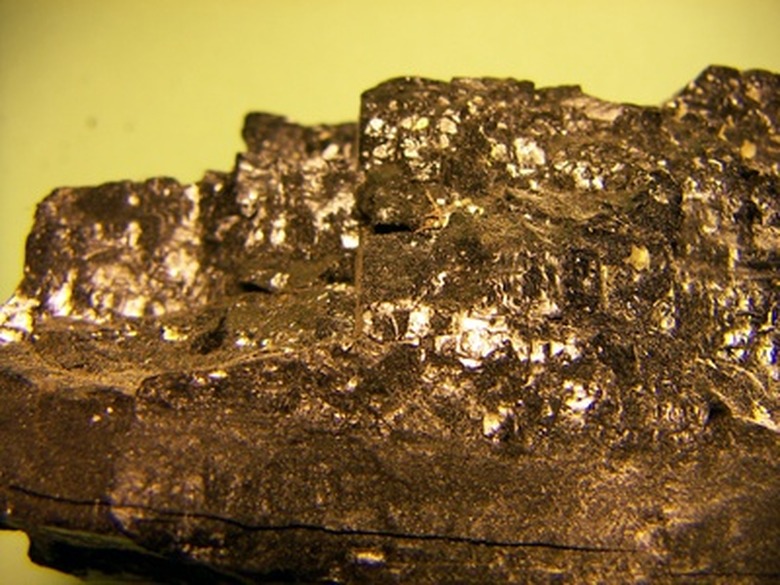How To Make Calcium Carbide
Calcium carbide is a chemical compound with numerous industrial applications. When combined with water, it produces acetylene gas, which is used in welding and cutting torches. According to the Hong Kong Trade Development Council, calcium carbide also constitutes a key component of most polyvinyl chloride (PVC) produced in China. The compound has been produced since the late 1800s by reacting lime and coal in a furnace. The U.S. Environmental Protection Agency found that particulate matter and other byproducts enter the environment as a result of calcium carbide production, but hydrocarbon emissions from the production of calcium carbide are minimal. Making calcium carbide involves a difficult process.
Step 1
Insert lime and coal into an electric arc furnace.
Step 2
Heat the electric arc furnace to a temperature of at least 3,632 degrees F. Do not allow the temperature to exceed 3,812 degrees F.
Step 3
Place electrode paste near the electric arc furnace to bake.
Step 4
Feed the baked electrode paste to the furnace. It will act as a catalyst for the lime and coal.
Step 5
Move the resulting molten calcium carbide into cooling equipment (chilling mechanism). This will allow it to solidify.
Step 6
Process the solidified calcium carbide in a crushing mechanism.until it reaches the desired size.
Things Needed
- Lime
- Coal
- Electric arc furnace
- Electrode paste
- Cooling equipment
- Open-air environment
- Crushing mechanism
TL;DR (Too Long; Didn't Read)
In an ideal reaction, 2.2 lb. lime, 1 1/2 lb. coal and 0.04 lb. electrode paste should result in a final product of 2.2 lb. calcium carbide.
Mine and refine the lime, coal and electrode paste close to the furnace to maximize efficiency.
Warning
Follow all laws and regulations pertaining to the production of chemical compounds. The temperatures involved in the production of calcium carbide mean that only professionals trained in the use of the required equipment should attempt to make calcium carbide.
Crush the solid calcium carbide in either an open-air setting or inert environment prior to it cooling completely. Failure to do so can lead to an explosion hazard.
Too many impurities in the lime and coal used to create the calcium carbide will result in impurities in the calcium carbide.
Cite This Article
MLA
Thryn, Damien. "How To Make Calcium Carbide" sciencing.com, https://www.sciencing.com/how-to-make-calcium-carbide-12081069/. 29 September 2017.
APA
Thryn, Damien. (2017, September 29). How To Make Calcium Carbide. sciencing.com. Retrieved from https://www.sciencing.com/how-to-make-calcium-carbide-12081069/
Chicago
Thryn, Damien. How To Make Calcium Carbide last modified March 24, 2022. https://www.sciencing.com/how-to-make-calcium-carbide-12081069/
